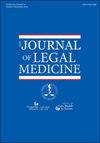紊流气流服装危害职业安全和感染控制:医院风险管理案例报告
IF 0.8
4区 医学
Q3 LAW
引用次数: 0
摘要
目的:向医院感染控制、风险管理、医院管理者和医护人员通报感染控制的一个新的和令人惊讶的威胁:气动服装气动服装使用一个小电机创建正压在服装这一机制类似于电动空气净化呼吸器(地表铺面)然而,1与地表铺面气动服装不过滤传入的空气通过一个高效微粒空气过滤器,空气也不捕获在一个包含空间和过滤之前释放到环境影响是水滴从服装的人或从空气中吸入服装,这些颗粒通常太重,无法移动超过6英尺,它们通过湍流鼓风机被雾化,这些小颗粒可以很容易地穿透制作服装的薄织物,通过雾化颗粒,然后用正压力推动它们,从而产生感染控制问题。2021年1月,加利福尼亚州圣何塞爆发了Covid-19疫情,其接触来源令人惊讶。圣诞节当天,一名工人希望振奋精神,无意中通过空气动力圣诞树服装传播了Covid-19。该工人没有SARS-COV-2的症状,也不知道自己被感染了。结果是悲惨的在圣何塞,至少有60人感染,一人死亡。这一案例表明,本应是一项慈善行动的结果是悲剧性的,所有证据都表明,缺乏指导这一善意行动的信息,本应减轻大流行病的压力和负担的行动,不幸地造成了更大的压力和负担,造成了生命损失和未知的发病率。此外,还可能对那些认为自己在帮助他人的人造成心理伤害,考虑到医院里的这些服装很少见,像这样的悲剧应该是可以预防的,Covid-19不是理论上可以通过这种机制传播的唯一病原体医院应该制定限制使用这些服装的政策,应该向工作人员提供有关这些服装危险的教育考虑到个人可能会通过寻找替代品来采取行动,风险管理和感染控制应制定适当的政策,以解决工作人员和患者的心理健康需求,同时保持适当的感染控制。既然有这种病原体传播方法的文件,如果医院未能建立合理的政策和关于湍流气动服装的教育,则可能面临责任本文章由计算机程序翻译,如有差异,请以英文原文为准。
Turbulent Airflow Costume Compromises Occupational Safety and Infection Control: A Hospital Risk Management Case Report
Objectives: To inform hospital infection control, risk management, hospital administrators, and healthcare workers about a new and surprising threat to infection control: air-powered costumes Background: Air-powered costumes use a small motor to create positive pressure within the costume This mechanism is similar to Powered Air Purifying Respirator (PAPR) 1 However, unlike a PAPR the air-powered costume does not filter the incoming air through a HEPA filter Nor does it capture the air inside a contained space and filter it before it is released into the environment The affect is that droplets from the person in the costume or from air that is drawn into the costume, which would normally be too heavy to travel farther than 6 feet, are aerosolized by traveling through the turbulent blower These small particles can easily penetrate the thin fabric that makes the costume This creates an infection control problem by aerosolizing the particles and then propelling them with the force of positive pressure " Case Description: In January of 2021, a Covid-19 outbreak in San Jose, CA, was contact traced back to a surprising source On Christmas day, a worker wishing to lift spirits, unknowingly spread Covid-19 via an air-powered Christmas tree costume The worker did not have symptoms of SARS-COV-2 and did not know they were infected The result is tragic In San Jose, at least 60 people were infected, and one person died " Conclusion: This case manifests a tragic outcome to what was meant to be a benevolent action All evidence points to lack of information guiding this well-intentioned action What was meant to decrease the stress and burden of the pandemic, became a greater stress and burden Tragically with a loss of life and unknown morbidity Further, there is the potential for a psychologic toll on the person who thought they were helping others, only to learn that they had harmed them Given that these costumes in hospitals are rare, further tragedies such as this one should be preventable Covid-19 is not the only pathogen that could theoretically be spread by this mechanism Hospital should have a policy that restricts the use of these costumes Education about the danger of these costumes should be provided to staff Given that personal may act by finding replacement, risk management and infection control should create an adequate policy to address the mental health needs of staff and patients, while maintain appropriate infection control Now that there is documentation of this methods of pathogenic spread, hospitals may face liability if they fail to establish a reasonable policy and education regarding turbulent flow air-powered costumes
求助全文
通过发布文献求助,成功后即可免费获取论文全文。
去求助
来源期刊

Journal of Legal Medicine
Multiple-
CiteScore
1.10
自引率
0.00%
发文量
3
期刊介绍:
The Journal of Legal Medicine is the official quarterly publication of the American College of Legal Medicine (ACLM). Incorporated in 1960, the ACLM has among its objectives the fostering and encouragement of research and study in the field of legal medicine. The Journal of Legal Medicine is internationally circulated and includes articles and commentaries on topics of interest in legal medicine, health law and policy, professional liability, hospital law, food and drug law, medical legal research and education, the history of legal medicine, and a broad range of other related topics. Book review essays, featuring leading contributions to the field, are included in each issue.
 求助内容:
求助内容: 应助结果提醒方式:
应助结果提醒方式:


